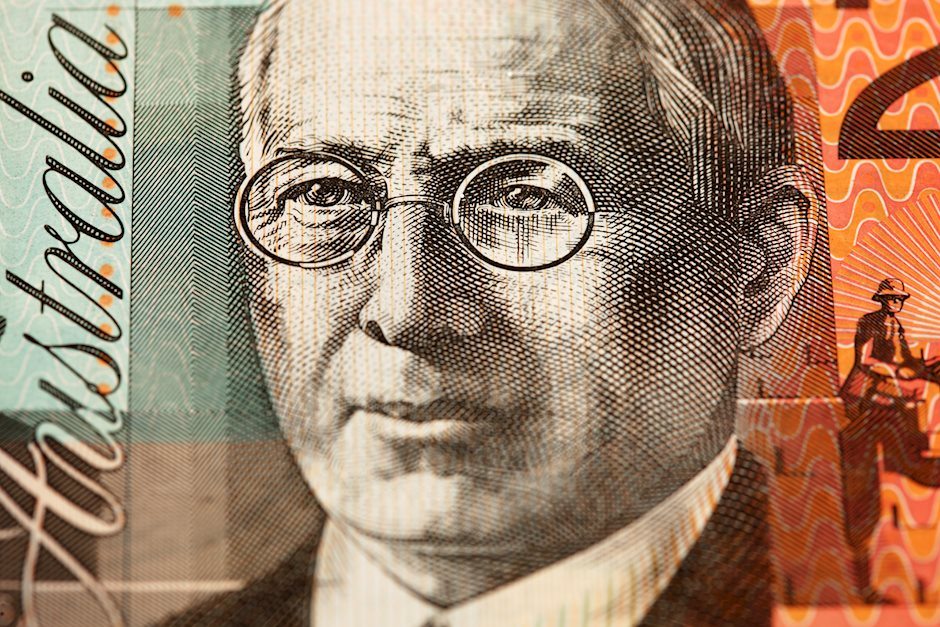Created
: 2024.10.23














![]() 2024.10.23 05:42
2024.10.23 05:42
The AUD/USD rose by 0.35% to 0.6685 on Tuesday, recovering sharply from 0.6650 amid hawkish signals from the Reserve Bank of Australia (RBA) and hopes for economic stimulus. Markets seem to be considering the possibility of no cuts by the RBA this year. Copper and iron ore prices rebounded as well, providing support to the Australian Dollar.
The RBA is on track to becoming the last central bank of the G10 countries to start cutting interest rates. In the meantime, the bank's officials haven't offered clues about when they might consider a rate cut.
The Relative Strength Index (RSI) has recovered from a low of 39 into the negative area, indicating that buying pressure is recovering for the Aussie. However, the Moving Average Convergence Divergence (MACD) histogram is red and decreasing, suggesting that selling pressure is still present while declining. The overall outlook is mixed with the RSI suggesting a recovery in buying pressure and the MACD suggesting a decline in selling pressure.
Support levels are seen around 0.6680, 0.6650 and 0.6630, while resistance levels are located near 0.6700 (100-day SMA), 0.6730 and 0.6750. Traders should watch for a break of these levels to determine the direction of the next trend.
The Reserve Bank of Australia (RBA) sets interest rates and manages monetary policy for Australia. Decisions are made by a board of governors at 11 meetings a year and ad hoc emergency meetings as required. The RBA's primary mandate is to maintain price stability, which means an inflation rate of 2-3%, but also "..to contribute to the stability of the currency, full employment, and the economic prosperity and welfare of the Australian people." Its main tool for achieving this is by raising or lowering interest rates. Relatively high interest rates will strengthen the Australian Dollar (AUD) and vice versa. Other RBA tools include quantitative easing and tightening.
While inflation had always traditionally been thought of as a negative factor for currencies since it lowers the value of money in general, the opposite has actually been the case in modern times with the relaxation of cross-border capital controls. Moderately higher inflation now tends to lead central banks to put up their interest rates, which in turn has the effect of attracting more capital inflows from global investors seeking a lucrative place to keep their money. This increases demand for the local currency, which in the case of Australia is the Aussie Dollar.
Macroeconomic data gauges the health of an economy and can have an impact on the value of its currency. Investors prefer to invest their capital in economies that are safe and growing rather than precarious and shrinking. Greater capital inflows increase the aggregate demand and value of the domestic currency. Classic indicators, such as GDP, Manufacturing and Services PMIs, employment, and consumer sentiment surveys can influence AUD. A strong economy may encourage the Reserve Bank of Australia to put up interest rates, also supporting AUD.
Quantitative Easing (QE) is a tool used in extreme situations when lowering interest rates is not enough to restore the flow of credit in the economy. QE is the process by which the Reserve Bank of Australia (RBA) prints Australian Dollars (AUD) for the purpose of buying assets - usually government or corporate bonds - from financial institutions, thereby providing them with much-needed liquidity. QE usually results in a weaker AUD.
Quantitative tightening (QT) is the reverse of QE. It is undertaken after QE when an economic recovery is underway and inflation starts rising. Whilst in QE the Reserve Bank of Australia (RBA) purchases government and corporate bonds from financial institutions to provide them with liquidity, in QT the RBA stops buying more assets, and stops reinvesting the principal maturing on the bonds it already holds. It would be positive (or bullish) for the Australian Dollar.
![]()
Created
: 2024.10.23
![]()
Last updated
: 2024.10.23

FXStreet is a forex information website, delivering market analysis and news articles 24/7.
It features a number of articles contributed by well-known analysts, in addition to the ones by its editorial team.
Founded in 2000 by Francesc Riverola, a Spanish economist, it has grown to become a world-renowned information website.
We hope you find this article useful. Any comments or suggestions will be greatly appreciated.
We are also looking for writers with extensive experience in forex and crypto to join us.
please contact us at [email protected].
Disclaimer:
All information and content provided on this website is provided for informational purposes only and is not intended to solicit any investment. Although all efforts are made in order to ensure that the information is correct, no guarantee is provided for the accuracy of any content on this website. Any decision made shall be the responsibility of the investor and Myforex does not take any responsibility whatsoever regarding the use of any information provided herein.
The content provided on this website belongs to Myforex and, where stated, the relevant licensors. All rights are reserved by Myforex and the relevant licensors, and no content of this website, whether in full or in part, shall be copied or displayed elsewhere without the explicit written permission of the relevant copyright holder. If you wish to use any part of the content provided on this website, please ensure that you contact Myforex.
Myforex uses cookies to improve the convenience and functionality of this website. This website may include cookies not only by us but also by third parties (advertisers, log analysts, etc.) for the purpose of tracking the activities of users. Cookie policy